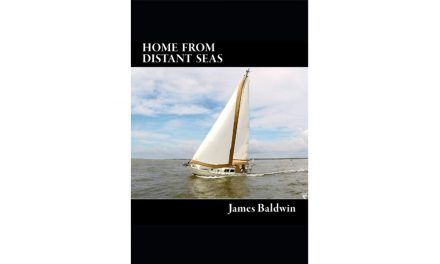Three New Legends
In 1906, Thomas Fleming Day founded the Bermuda Race with the revolutionary aim of providing an ocean race for amateur sailors in normal boats. In the process, he started the world’s oldest regularly scheduled long-distance ocean sailing race. It’s a 635-mile race from Newport, Rhode Island, to Bermuda. It’s been won in modest boats, including a Cal 40.
There is a Roll of Honour to recognize and celebrate extraordinary achievement “in or concerning the Newport Bermuda Race and its predecessor races.” Until recently, there were 10 people on this Roll of Honour, now there are 13. The following three men are the newest members.

John Gale Alden (1884-1962) An ocean racing pioneer both as a sailor and as a naval architect specializing in offshore sailing yachts for Corinthian crews, John Alden raced to Bermuda 10 times, most often in command of a series of designs he named Malabar. He was a Cruising Club of America member and a member of the race organizing committee in the ‘20s. As a competitor, he took home trophies in six races and won three races overall (1923, 1926, 1932), setting a record matched only by Carleton Mitchell. Schooners of his design were among the top finishers for many years; in 1932, when Malabar X won, other Alden schooners occupied the next three places.

Edmund Kirkland “Kirk” Cooper (1932-2018): While growing up in Bermuda, recalled Kirk Cooper, “My father took me outside behind a wall, and he told me to stick my head out so I’d know what a strong wind was.” He came to know that wind well, sailing his first Newport Bermuda Race at age 17 in a boat named Dirigo that his wife Helen described as “tiny.” He went on to race 16 more Newport Bermuda Races, plus the Marion to Bermuda and Marblehead to Halifax races, often in command of his Frers 44 or his McCurdy & Rhodes 69. Both were named Alphida (for three of his children, Alex, Phillip and David).
As Royal Bermuda Yacht Club Commodore in 1972, the year of the roughest Bermuda Race, Kirk calmed worried families and supervised finishes without the loss of a boat. A top-notch small-boat sailor as well, Kirk went to college in Montreal, sailed International 14s successfully and, after returning to Bermuda, represented his country in three Olympic games, racing in Dragons and Solings. In 1986, he was awarded the Order of the British Empire for his service to the island.

Bjorn R. Johnson (1955-2018): The 15 “Thrashes to the Onion Patch” he sailed were a fraction of Bjorn’s contributions to the Newport Bermuda Race. A deeply experienced offshore sailor with victories in the Bermuda One-Two and the Transatlantic Race to his credit, Bjorn was well known as chief inspector for several Bermuda races. This role led him to join the US Sailing Safety at Sea Committee that significantly simplified the international offshore safety equipment regulations, to the benefit of all offshore sailors in the U.S.
Bjorn served as Bermuda Race Chairman in 2010 and continued to serve the Organizing Committee thereafter. He was an ever creative, knowledgeable, and essential volunteer who cheerfully took on the most challenging assignments ranging from race-entry management to sponsorship sales and fulfillment. Bjorn personified the dedicated volunteer spirit that has sustained the race since its founding in 1906.

Mind Your PLBs
Personal Locator Beacons (PLBs), those pint-sized, individual rescue beacons used by boaters, sailors, and paddlers to summon emergency help, have saved hundreds of lives since their authorization for use 17 years ago. That doesn’t mean they are maintenance free, according to the BoatUS Foundation for Boating Safety. The boating safety nonprofit offers the following tips to maintain and use a PLB.
- PLBs need to be registered with NOAA. To ensure accurate, up-to-date information, registration is valid for just two years. While NOAA will attempt to reach you to re-register, put in on your calendar.
- Not sure of your PLB registration’s emergency contact information? NOAA allows PLB owners to view and update contact info at any time. Outdated information can delay rescuers.
- PLBs need to be tested, typically monthly, according to manufacturer recommendations. Testing does not activate a PLB, so get comfortable testing yours.
- After testing, confirm that the battery has not expired and the O-ring is in good shape. This will give you peace of mind that the PLB will operate flawlessly when you really need it. Battery life is typically five years.
- Because they are worn by the user, PLBs can get banged up or abused during normal wear. It’s a good idea to check over the outer case for cracks or damage.
- What makes a PLB different from an Emergency Position Indicating Radio Beacon (EPIRB)? Both use NOAA’s Search And Rescue Satellite Aided Tracking (SARSAT) System to detect and locate mariners in distress, however EPIRBs are intended to facilitate a rescue for a specific boat while PLBs are used for individual crew. The other big difference is PLBs can only be activated manually, even if the wearer is underwater, while EPIRBs activate automatically upon submersion.
- With larger batteries, EPIRBs are also rated to activate for a minimum of 48 hours while PLBs have a minimum of 24 hours. Having both aboard for offshore passages can increase redundancy and crew safety.
Finally, for anyone with a temporary need for a PLB (crewing on a Bermuda Race?), know that they are available for rent from the BoatUS Foundation for Boating Safety.
Nautical Trivia
How are you doing?
Good? Fine? Hunky dory? I hope so. But where did that last one come from?
Word on the street: Japan.
Sailors visiting Yokohama (or perhaps Yokosuka) in the 1800s would frequent the Red Light district on a street pronounced “hoe-ma-chee.” In Japanese, the word street is pronounced “toe-ree.” Put it all together, and it’s easy to see how this pronunciation might have been bastardized by sailors into honky dory, from which evolved hunky dory.
The jump to using the term to mean “everything’s just fine” seems very logical.
While it has not been proven definitively, this theory seems more credible than the many others I looked at. The term’s been around for a long time and even the Oxford English Dictionary is mum on its origin.






